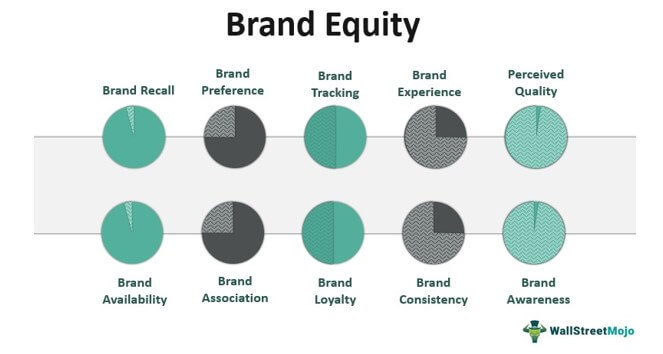
In the competitive landscape of today’s market, brand equity has emerged as a critical factor that can significantly influence a company’s success.
But what exactly is brand equity, and why is it so important? This article delves into the concept of brand equity, its components, and how businesses can build and measure it to gain a competitive edge.
What is Brand Equity?
Brand equity refers to the value a brand adds to a product or service beyond its functional benefits. It encompasses the brand’s reputation, customer perceptions, and overall market strength.
Essentially, brand equity is the positive or negative impact that a brand’s name has on a consumer’s decision-making process and the company’s financial performance.
Why is Brand Equity Important?
- Customer Loyalty: High brand equity often translates to strong customer loyalty. Consumers are more likely to repurchase from a brand they trust and have had positive experiences with, leading to increased customer retention and lifetime value.
- Pricing Power: Brands with high equity can command premium prices. Consumers are willing to pay more for products or services from a brand they perceive as superior or more reliable.
- Competitive Advantage: Strong brand equity differentiates a company from its competitors. A well-established brand can create barriers to entry for new competitors and attract customers more effectively.
- Market Positioning: Effective brand equity helps in positioning a brand more strategically in the market. It allows a company to leverage its reputation to enter new markets or introduce new products.
- Financial Performance: Companies with strong brand equity often experience better financial performance. Brand equity can contribute to higher sales, improved profitability, and increased shareholder value.
Components of Brand Equity
- Brand Awareness: This refers to the extent to which consumers recognize and recall a brand. High brand awareness means that a brand is easily identifiable and top-of-mind for consumers when making purchasing decisions.
- Brand Associations: These are the mental connections consumers make with a brand. Positive brand associations, such as quality, reliability, or innovation, enhance brand equity by influencing consumer perceptions and attitudes.
- Perceived Quality: This is the consumer’s judgment about a brand’s overall quality and performance compared to competitors. A brand that is perceived as high quality generally has stronger brand equity.
- Brand Loyalty: This measures the degree of customer commitment to a brand. Loyal customers are less likely to switch to competitors and are more likely to advocate for the brand, further enhancing its equity.
- Brand Assets: These include proprietary elements like trademarks, patents, and distinctive brand elements that contribute to the brand’s value. Strong brand assets can provide legal protection and competitive advantages.
Building Brand Equity
- Consistent Branding: Ensure that all brand communications, visuals, and messages are consistent across all channels. Consistency helps in building recognition and trust over time.
- Deliver Exceptional Customer Experiences: Focus on providing high-quality products or services and excellent customer service. Positive customer experiences foster brand loyalty and enhance brand equity.
- Invest in Brand Awareness: Use marketing and advertising strategies to increase brand visibility. Engaging content, strategic promotions, and partnerships can help in building brand awareness.
- Foster Strong Brand Associations: Develop and communicate brand values and attributes that resonate with your target audience. Create associations that align with the brand’s identity and consumer expectations.
- Encourage Brand Loyalty: Implement loyalty programs, offer incentives, and build relationships with customers to encourage repeat business and enhance brand loyalty.
- Leverage Customer Feedback: Actively seek and act on customer feedback to improve products and services. Addressing customer concerns and showing that you value their opinions can strengthen brand equity.
Measuring Brand Equity
- Brand Awareness Metrics: Track metrics such as brand recall, recognition, and the volume of searches related to your brand. Surveys and market research can help gauge brand awareness.
- Customer Surveys and Feedback: Use surveys to assess customer perceptions, brand associations, and overall satisfaction. Analyze feedback to understand how consumers view your brand and identify areas for improvement.
- Sales and Financial Performance: Evaluate sales data, pricing power, and profitability. Strong brand equity often correlates with higher sales and the ability to command premium prices.
- Market Share Analysis: Measure your brand’s market share relative to competitors. A higher market share can indicate strong brand equity and consumer preference.
- Brand Valuation: Conduct brand valuation studies to estimate the financial value of your brand. Various models and methodologies can help assess brand equity from a financial perspective.
Conclusion
Brand equity is more than just a buzzword—it’s a vital asset that can drive a company’s success and longevity. By understanding its components and investing in strategies to build and measure it, businesses can create a strong, recognizable brand that resonates with consumers and stands out in a crowded marketplace.
Effective management of brand equity not only enhances customer loyalty and market position but also contributes to long-term financial performance and competitive advantage.

